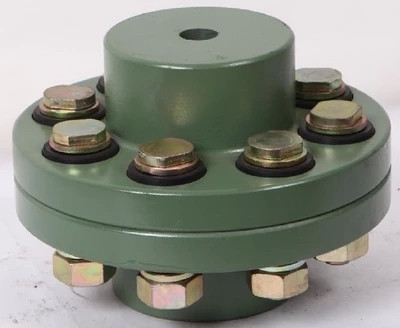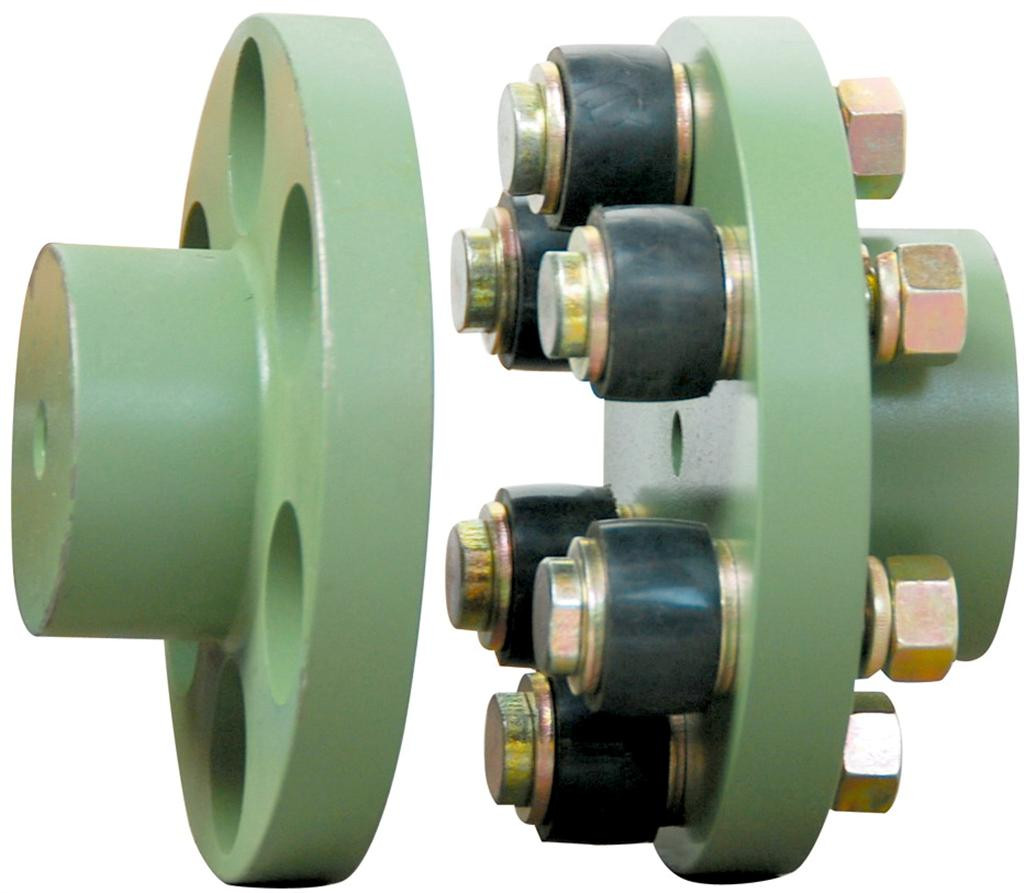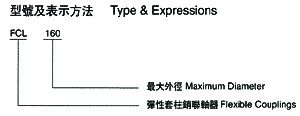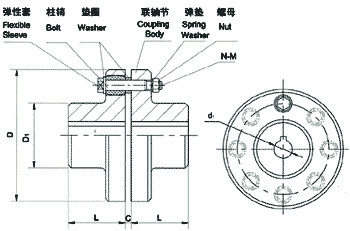The FCL type elastic coupling conforms to the Japanese national standard JISB1452. The FCL type elastic sleeve pin coupling uses a pin with an elastic sleeve (rubber material) at one end, and is installed in the flange holes of the two halves of the coupling to achieve two The coupling of the half-coupling. The elastic sleeve pin coupling used to be the most widely used coupling in my country. It has been formulated as the standard of the Ministry of Machinery as early as the late 1950s. The JB08-60 elastic ring pin coupling is the first part of Standard coupling. With its simple structure, convenient installation, small size, light weight, maintenance-free, and reliable quality, it is widely used and appreciated by customers in Japan and other countries in the world.


FCL type elastic coupling features: good vibration absorption, can make the movement of the active shaft to the passive shaft smoothly. There is no axial thrust in the transmission. Easy disassembly and assembly, as long as the coupling bolt is removed, the connection between the active and passive can be separated. If the relative displacement of the two shafts can be kept within the specified range after installation and adjustment, the coupling will have satisfactory performance and long working life. Therefore, it can be widely used in various medium and small power transmission shafts driven by electric motors with small loads, such as reducers, transmissions, pumps, printing and dyeing machines, hoists, cranes, compressors, conveyors, textile machines, hoists, Ball mill, etc.
The FCL elastic sleeve pin coupling has a relatively simple structure and belongs to the category of elastic couplings. It is easy to manufacture, does not require lubrication, does not need to be bonded with metal vulcanization, is convenient to replace the elastic sleeve, and does not need to move the half coupling. Shaft relative offset and vibration damping performance. The elastic sleeve is subject to compression deformation. Due to the thin thickness, small volume and limited elastic deformation of the elastic sleeve, although the elastic sleeve pin coupling can compensate for the axial displacement and elasticity, the allowable compensation amount for the axial displacement is less. The elasticity is weak. The elastic sleeve pin coupling relies on the locking force of the pin group to generate the friction torque on the contact surface, and compresses the rubber elastic sleeve to transmit the torque. It is suitable for small and medium power shafting transmission with good mounting base rigidity, high centering accuracy, small impact load and low vibration damping requirements.


| Type | Max torque N.m |
Max speed r/min |
D | D 1 | d 1 | L | C | n-M | kg |
| FCL90 | 4 | 4000 | 90 | 35.5 | 11 | 28 | 3 | 4-M8×50 | 1.7 |
| FCL100 | 10 | 4000 | 100 | 40 | 11 | 35.5 | 3 | 4-M10×56 | 2.3 |
| FCL112 | 16 | 4000 | 112 | 45 | 13 | 40 | 3 | 4-M10×56 | 2.8 |
| FCL125 | 25 | 4000 | 125 | 50 | 13 | 45 | 3 | 4-M12×64 | 4.0 |
| FCL140 | 50 | 4000 | 140 | 63 | 13 | 50 | 3 | 6-M12×64 | 5.4 |
| FCL160 | 110 | 4000 | 160 | 80 | 15 | 56 | 3 | 8-M12×64 | 8.0 |
| FCL180 | 157 | 3500 | 180 | 90 | 15 | 63 | 3 | 8-M12×64 | 10.5 |
| FCL200 | 245 | 3200 | 200 | 100 | 21 | 71 | 4 | 8-M20×85 | 16.2 |
| FCL224 | 392 | 2850 | 224 | 112 | 21 | 80 | 4 | 8-M20×85 | 21.3 |
| FCL220 | 618 | 2550 | 250 | 125 | 25 | 90 | 4 | 8-M24×110 | 31.6 |
| FCL280 | 980 | 2300 | 280 | 140 | 34 | 100 | 4 | 8-M24×116 | 44.0 |
| FCL315 | 1568 | 2050 | 315 | 160 | 41 | 112 | 4 | 10-M24×116 | 57.7 |
| FCL355 | 2450 | 1800 | 355 | 180 | 60 | 125 | 5 | 8-M30×50 | 89.5 |
| FCL400 | 3920 | 1600 | 400 | 200 | 60 | 125 | 5 | 10-M30×150 | 113 |
| FCL450 | 6174 | 1400 | 450 | 224 | 65 | 140 | 5 | 12-M30×150 | 145 |
| FCL560 | 9800 | 1150 | 560 | 250 | 85 | 160 | 5 | 14-M30×150 | 229 |
| FCL630 | 15680 | 1000 | 630 | 280 | 95 | 180 | 5 | 18-M30×150 | 296 |
Post time: Oct-12-2022
